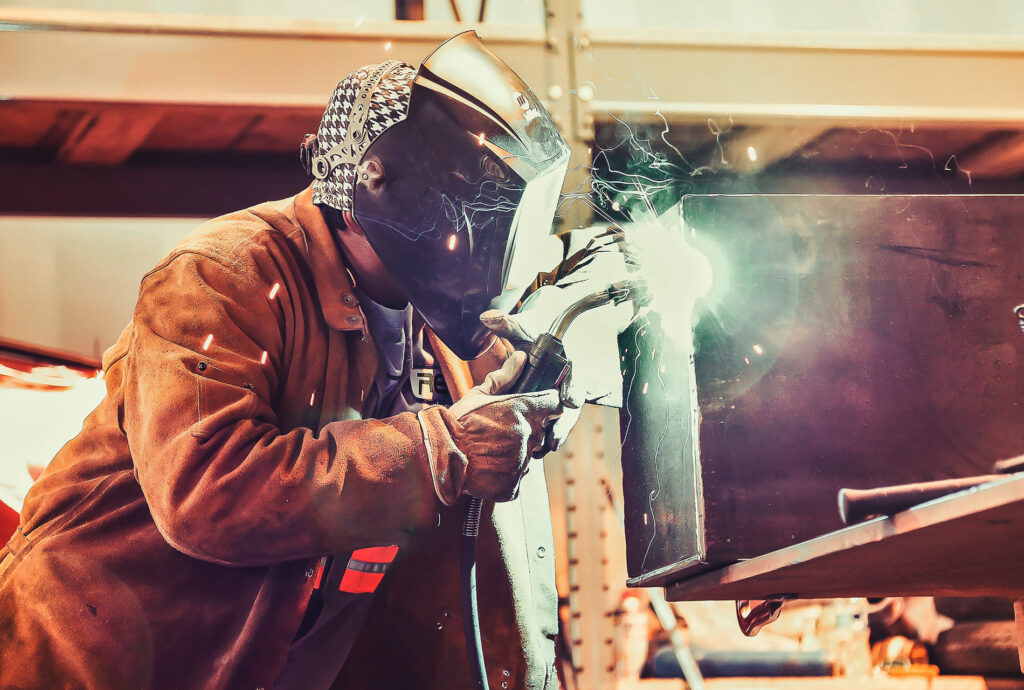For a great customer experience, contact Metal Protection Lenoli. Providing excellent service for many years, the company specializes in corrosion protection of metals. Their professional staff is knowledgeable, reliable, and easy to work with. They are a resource for complex projects and take pride in their work. Read on to learn more about how Metal Protection Lenoli can help you. This company is one of the best around! They offer solutions for all of your metal protection needs.
Methods of corrosion protection
There are several methods of corrosion protection for metal structures. Generally, corrosion occurs because the metal is exposed to the marine environment, which is an aggressive medium. Some cargo types can be even worse, so a cost-effective solution is to periodically replace corroded structures. In addition to these methods, some ship-like structures contain several kilometers of welds. In addition, the rules set by classification societies define the corrosion margins.
One of the most popular methods of corrosion protection for metal is electroplating. This process involves electrodepositing metal onto a substrate to slow or stop corrosion. Zinc is the metal of choice for corrosion protection. Zinc-nickel alloys are considered the best corrosion protection for the automotive industry. Other methods of corrosion protection for metal include chemical treatments and corrosion-resistant coatings. But no matter what kind of corrosion protection method you choose, it is imperative to plan ahead and protect your metal. By following these methods, you can extend the life of your metal and maintain its aesthetic appeal.
Another method of corrosion protection for metal is cathodic protection. In this method, a metallic anode is used to protect steel from corrosion. In this method, the metal that is protected serves as the anode and is protected by a tin coating. It is commonly used for carbon steel storage tanks. This method does not work well in environments with high current. It is also not recommended for use in high-current environments.
One of the simplest ways of preventing corrosion is by applying protective coatings. These coatings can be applied directly to the metal surface. Environmental control and protective coatings are also effective methods of corrosion protection for metal parts. Small scratches and nicks can promote corrosion, so it is important to keep parts clean and apply additional protection when needed. The best protection for metal parts is a combination of the three methods. It’s important to follow instructions carefully, however.
Chemical corrosion inhibitors can be solid, liquid, or gaseous. These compounds react with the metal surface and surrounding gases to prevent electrochemical reactions that cause corrosion on pvc floorings. Typically, these inhibitors form a protective film on the metal surface. These protective coatings can be applied by dispersion techniques or as a solution. Passivation is another common method of corrosion protection. However, the effectiveness of these treatments depends on the type of metals and corrosion agents used.
A coating that contains core-shell pigments may be an effective way to provide protection for metal components. A paint film that contains core-shell pigments can show characteristic semicircles of the capacitive type. High Rp values after 28 days of immersion is consistent with a high degree of corrosion protection. In general, the lower Rp values during the first two weeks of immersion can be attributed to the high chloride attack. Once the coating stabilizes, polarization resistance rises slowly, resulting in a gradual increase in Rp values (see this website).

Biological methods of protecting metals from corrosion
Biological methods of protecting metals from corrosion include the use of biofilms. These films are composed mainly of water and bacteria that can significantly modify the chemical environment of the metal surface. Consequently, they can influence corrosion processes, such as pitting, galvanic, and oxidative corrosion. Biological methods of protecting metals from corrosion are increasingly used in industry. However, biofilms are not the only method used to prevent corrosion.
Biofilms are a viable alternative to conventional anti-corrosion measures. The protective biofilm acts like a barrier by limiting the growth of corroding organisms and reactions. Single-organism biofilms have been tested in a limited number of lab experiments. Molecular biology studies are ongoing. These research findings may ultimately have a wide range of applications. Biological methods of protecting metals from corrosion may one day replace chemical protection.
One biological method of corrosion prevention is the application of grease and oil to the metal. These substances help prevent the metal from contacting the environment. These agents can help protect metals from corrosion by forming an insoluble phosphate coating on the surface of the metal. In addition to phosphate, phosphoric acid may form a thin chromate layer as a result. Electrochemical theories can also be used to protect metals from corrosion.
The MIC mechanism depends on the chemical nature of the environment, specific microorganisms, and the electrochemical properties of the metals that are being treated. Examples of MIC have been reported in the human body, and their impact on the durability of medical implants and the health of patients is critical. In the meantime, research is underway to develop better protection systems. There are a number of options for preventing corrosion in industrial environments.
Among these methods, stabilizing water is often the most straightforward and inexpensive. In addition to adding an alkaline substance to corrosive water, the alkalinity level must be maintained in a distribution system to kill bacteria. Another type of coating provides a protective layer made from polyphosphates and orthophosphates. In the case of zinc, a zinc-phosphate coating is applied to protect metals from corrosion.
Water has various chemical elements, including hydrogen, oxygen, and carbon dioxide. These substances react with metals to form oxides and corrode. Biological methods of protecting metals from corrosion have the potential to improve the quality of water in water treatment facilities and in the hands of consumers. This can reduce water treatment costs, reduce consumer health, and improve the aesthetics of finished water. In the meantime, corrosion-resistant pipes can protect the environment while protecting infrastructure.
Cathodic protection is another electrical method for protecting metals from corrosion. This method is most suitable for water storage tanks but is not suitable for protecting an entire system, and cannot protect internal corners and crevices. The process is slow and requires careful monitoring. For example, an inert anode cannot prevent the metal from oxidizing, so a sacrificial anode must be installed.
Chemical methods of protecting metals from corrosion
There are several chemical methods of protecting metals from corrosion. Typically, these methods utilize the addition of anodes, which are alloys that have higher electrochemical potential than steel. These anodes act as protection for the steel by supplying free electrons to it, and the alloys themselves sacrifice ions to provide the metal with protection. Chemical methods of protecting metals from corrosion are generally more expensive than physical means.
Another way of protecting metals is through cathodic protection. This process uses a small amount of a reactive metal that reacts with oxygen to prevent the metal from oxidizing. The protective coating is then applied to the metal. Galvanized steel, for example, is protected by a thin layer of zinc, while sacrificial electrodes are used to protect objects. This process is often used in industries such as automotive and aerospace.
Chemical conversion coatings have increased corrosion resistance and improve the adhesion of further coatings. However, the application of these coatings has been restricted due to their impact on natural environments and human health. Additionally, these compounds are deemed carcinogenic, and environmental legislation has severely restricted their use. Instead, environmentalists are investigating alternative materials for corrosion protection. Novel materials must also meet environmental targets in order to be considered as a viable option for corrosion protection.
Electroplating is another popular corrosion control method. This process involves the electroplating of a thin layer of metal on a metal substrate. This process not only slows the rate of corrosion but also provides an aesthetic finish. Electroplating often involves the use of zinc, while electroless plating involves the application of a non-electric chemical solution. Moreover, hot-dipping involves immersion in a molten protective metal.
Environmental factors play a significant role in corrosion. By controlling the environment, metals can be protected from corrosion or at least slow down the rate at which it occurs. Various measures, including reducing moisture exposure and monitoring air, sulfur, chlorine and pH levels, can control the rate of corrosion. Simple adjustments to manufacturing processes, regular maintenance, and implementing corrosion-proofing materials can also inhibit the process of metal corrosion.
Corrosion is a natural process whereby a metallic surface is damaged by a reaction of oxygen with moisture. This reaction occurs over time and causes the metal to change from its original state to a more stable one. The result of corrosion is rust. In severe cases, corroded metal can collapse and become unsafe, causing leaks and medical implants that can poison people. The global cost of metallic corrosion is estimated to be $2.2 trillion USD a year.
Corrosion is a natural process that results in oxidation or the selective removal of materials from a metal’s surface. It costs the world about $7 billion a year in repair costs and can be prevented by identifying the underlying causes. Indirect losses include fires, leakages, power failures, and labor costs. In addition to direct losses, corrosion can also lead to indirect losses, such as fires, facility shutdowns, and labor shortages.

